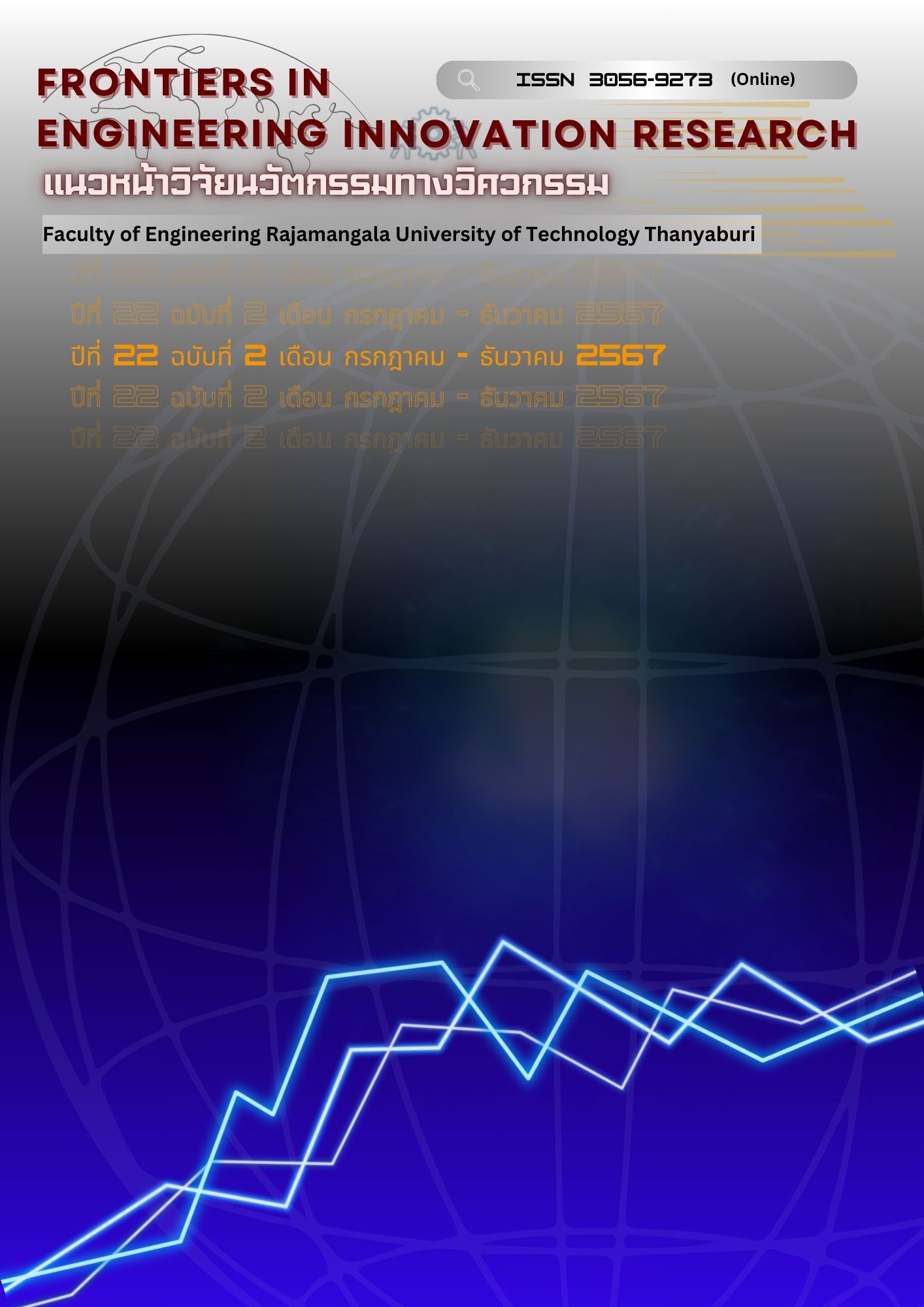Techno-economic feasibility study of electricity generation from industrial wastewater treatment system
Main Article Content
Abstract
This paper reports a techno-economic feasibility study of electricity generation from an industrial wastewater treatment system. First, a small model of an electrical generation power system, 0.70 m. width, 3.68 m. length, and a height of 1.55 m. was designed and assembled. Four Micro hydro turbine generators were tested at flow rates ranging from 500 to 2,000 LPH similar to effluent from industrial wastewater treatment plants. Experimental results showed that type 1 impulse turbine (3 watts) can generate electricity of 1.27 Watts at a maximum flow rate of 1,000 LPH. Whereas type 2 Pelton turbine (50 watts) can generate maximum electricity of 10.35 Watts at a flow rate of 1,300 LPH. Type 3 Water wheel turbine (100 watts) can generate maximum electricity of 0.32 Watts at a flow rate of 2,000 LPH while type 4 Impulse turbine (100 watts) cannot operate within the experimental flow rate range. Then, an economic analysis of electricity production from the wastewater treatment system at a flow rate of 29 m3/h found that installing a 1 kW power generating set has a payback period of 1.3 years. Therefore, this research demonstrated that generating electrical current using wastewater from treatment plant is technically and economically viable option and deserves consideration. This study can be used as a guideline for using industrial wastewater treatment systems to produce electricity and improve plant sustainability.
Article Details

This work is licensed under a Creative Commons Attribution-NonCommercial-NoDerivatives 4.0 International License.
The manuscript, information, content, picture and so forth which were published on Frontiers in engineering innovation research has been a copyright of this journal only. There is not allow anyone or any organize to duplicate all content or some document for unethical publication.
References
Molinos-Senante M, Maziotis A. Evaluation of energy efficiency of wastewater treatment plants: The influence of the technology and aging factors. Applied Energy. 2022;310:118535
Banadda N, Kiyingi D. Generation of electricity from sewage. The Open Renewable Energy Journal. 2014;7:13-20.
Gandiglio M, Lanzini A, Soto A, Leone P, Santarelli M. Enhancing the energy efficiency of wastewater treatment plants through co-digestion and fuel cell systems. Frontiers in Environmental Science. 2017;5:70.
Zhang QF, Uria Martinez R, Saulsbury B. Technical and economic feasibility assessment of small hydropower development in the Deschutes river basin. Oak Ridge National Lab.(ORNL), Oak Ridge, TN (United States); 2013.
Elbatran AH, Yaakob OB, Ahmed YM, Shabara HM. Operation, performance and economic analysis of low head micro-hydropower turbines for rural and remote areas: A review. Renewable and Sustainable Energy Reviews. 2015;43:40-50.
Elbatran AH, Abdel-Hamed MW, Yaakob OB, Ahmed YM, Ismail MA. Hydro power and turbine systems reviews. Jurnal Teknologi. 2015;74(5).
Kaewrattanasripho P. Simulation of the generating electricity from water turbines using the LabVIEW. Journal of Applied Research on Science and Technology (JARST). 2022;21(2):117-25.
Sabia G, Petta L, Avolio F, Caporossi E. Energy saving in wastewater treatment plants: a methodology based on common key performance indicators for the evaluation of plant energy performance, classification and benchmarking. Energy Conversion and Management. 2020;220:113067.
Lhaochai S, Neeratanaphan L. The efficiency of up-flow anaerobic sludge blanket and Internal circulation wastewater treatment systems, KKU Res. J. 2011;16(8):981-92. (in Thai)
Cobb BR, Sharp KV. Impulse (Turgo and Pelton) turbine performance characteristics and their impact on pico-hydro installations. Renewable energy. 2013;50:959-64.
Williamson SJ, Stark BH, Booker JD. Performance of a low-head pico-hydro Turgo turbine. Applied Energy. 2013;102:1114-26.
Termkla R, Matthujak A, Sriveerakul T. Development of a low-cost heat pipe solar thermal collector. Journal of Engineering, RMUTT. 2021;19(1):35-46.


